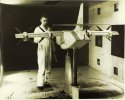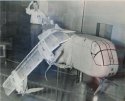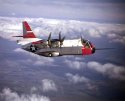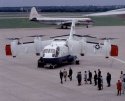The following pictures illustrate why you need lots of math, lots of tests, and lots of practical experience applied.
My Dad was one of the brightest aerodynamics and dynamics engineers during his generation. He worked for Vought and then Ling-Tempco-Vough for about 50 years.
He was a lead aerodynamic or dynamic engineer on multiple projects including the F-7 Cutlass, the F-8 Crusader, the A-7 Corsair and the XC-142A aircraft. He later went into their missiles division and produced a number of very cutting edge and capable designs.
The following pictures show the XC-142A being readied for wind tunnel testing. Early on, despite the very best calculations from vry broight minds like my Dad's...they had some failutres and some real life issues tro address that alluded their calculations (and at the point that the XC-142A wwas being designed, they were not novices)>
But the XC-142A wing and its ability to rotate from Horizontal to vertical, presented unique challenges at the time.
So you would get this:

Technician Sets up XC-142A Model in Wind Tunnel

Lead Engineer puzzles over XC-142A Wind Tunnel Results (That's my Dad)
Despite this, they continued on, and ultimately produced five prototypes for actual flight tests.
Even then, one of those crashed and tree good friends of my Dad's were lost.
But they soldiered on and ultimately produced an aircraft that fulfuilled all of the test requirements.

An XC-142A successfully making a vertical take-off

An XC-142A in level flight at altitude.
The US Air Force placed a production order for the C-142A Aircraft...only to have the Defense Department Secretary cancel it. (McNamara).
Just the same, NASA got a couple of those aircraft and flew them for some time.

One of NASA's XC-142A Aircraft
Lots and lots goes into the production of these aircraft.
Of course, back then they only had relatively simply calculators and slide rules which helped their minds and vision.
With today's 3D modeling software they can do a lot more in terms of computer modeling and tests before they actually build something to test. But in the end...they will still build the test models, the prototypes, the test production aircraft, and then the actual production aircraft.
They just may be able to do so with a lot less chance of loss, and fewer of them...if they do their jobs right.











